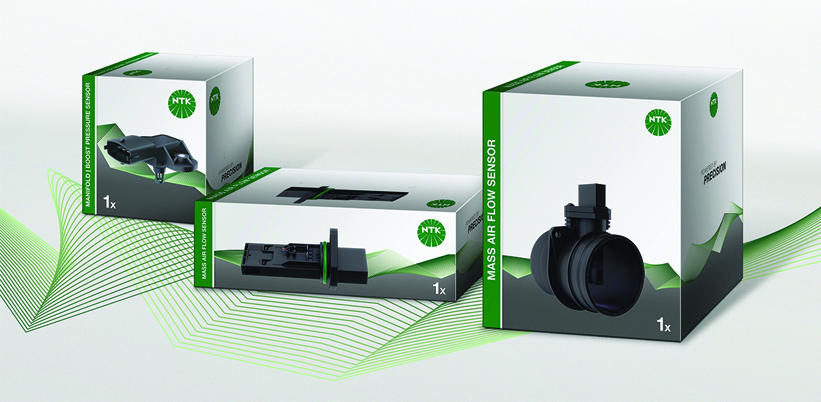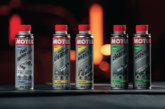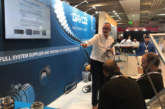Ignition specialist NGK explains how factors can capitalise on the sale of lambda sensors, as well as others, by providing technical fitment advice to their customers.
NGK says the experience it has in supplying vehicle manufacturers worldwide allows it to offer exactly the right sensor for every vehicle application.
The company recommends that distributors encourage garages to always go with a bespoke OE quality lambda sensor, steering clear of ‘universal sensors’. A ‘universal’ lambda sensor is designed to cover as many applications as possible by splicing in the connector from the unit being replaced. In theory, this sounds like a good idea; in practice, the potential for a mismatch with the vehicle’s system or subsequent premature failure is very high.
NGK’s pedigree in this technology can be traced back to 1982 when supply to mainly US vehicle manufacturers began. By 1994, production had reached the 50 million mark – being at the forefront of this technology was fundamental to the introduction of its aftermarket sensors programme in 1997.
The quality and availability of the range – coupled with its technical and sales support – enables NGK to provide distributors with the necessary back-up and know-how they need to satisfy their customers and, in turn, their garage customers’ requirements.
Mark Hallam, Marketing Manager, said: “NGK has enjoyed a long and highly successful relationship with our distributors and their garage customers with our OE spark plug and glow plug ranges, but there are also opportunities for them to develop increased business by stocking our NTK sensors.
“Our customers can be secure in the knowledge that our NTK lambda sensors always match the vehicle manufacturers’ specifications. All are factory tested as part of the VMs’ specification. They have OE connectors as standard, so no crimping or soldering is required.”

Fitment advice for distributors
NGK suggests distributors should help educate garages by ensuring they fit a new NTK Lambda sensor whenever they replace a vehicle’s catalytic converter.
A worn or failed sensor can result in drastically reduced control of the fuelling system, which could result in increased fuel consumption, uneven running, generally poor performance or failure of an emissions test; so replacement is good news for the customer, garage and distributor.
NGK recommends that the function of the sensor is checked every 20,000 miles or annually. The emissions check – as part of the current MOT test – samples the exhaust gases to monitor the efficiency of the engine, exhaust system and engine control systems. The lambda sensor is a vital part of this system and its function is, therefore, influenced by many other components.
A malfunction of an associated part may directly affect the performance of a sensor. An oscilloscope and gas analyser is a much more accurate way of assessing sensor performance than relying on fault codes alone. Garages need to look for slow response times, output range and heater function.
Contaminants from poor quality oils and fuel, which remain in the exhaust gases, can become deposited on the sensor element, affecting its operation. Even coolant from a leaking head gasket can reach the element.
MAF and MAP sensors
The company is continuing to add to its portfolio of NTK sensors and in September introduced ranges of 87 NTK Mass Air Flow (MAF) sensors and 69 Manifold Absolute Pressure (MAP) sensors.
For maximum efficiency in engine operation and to ensure effective exhaust gas treatment, the ECU needs to precisely regulate the air-fuel ratio.
MAF and MAP sensors are essential elements in this process. Both provide the ECU with a signal needed to calculate the amount of air aspirated by the engine.
Mark Hallam added: “With the launch of MAF and MAP sensors, NTK Vehicle Electronics is again strengthening its positioning in the market. NTK has incorporated its experience – from more than 40 years in the sensor business – into the new MAP and MAF sensor, allowing us to make it exactly what our customers need. I am sure they will be keen to learn more about our new products.”
The products complement the 2014 launch of NTK exhaust gas temperature sensors (EGTS), to support the ever-increasing complexity of exhaust gas management technology. They are thermistor devices that monitor the exhaust gas temperatures to enable the efficient operation and protection of vital components, including turbochargers, located directly in the flow of those hot gases.
EGTS from NTK are OE in approximately 35% of global passenger car sensor applications and are a popular choice for VMs, due to the fact that they provide extreme resilience against heat and vibrations, have high measuring accuracy, fast light-off times and an exceptionally wide measuring range – and they are available in the independent automotive aftermarket.










